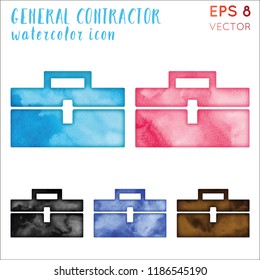Discover Exactly How Seasonal Impacts Can Impact The Efficiency Of Commercial Outside Paint And Find Out The Most Favorable Times To Make Sure Long Lasting Results For Your Task
Discover Exactly How Seasonal Impacts Can Impact The Efficiency Of Commercial Outside Paint And Find Out The Most Favorable Times To Make Sure Long Lasting Results For Your Task
Blog Article
Write-Up Author-Doherty Celik
When you're planning an industrial exterior painting job, seasonal variables can make or damage your outcomes. You'll wish to consider exactly how temperature and moisture effect paint application and drying times. Selecting the appropriate period can ensure your paint adheres effectively and lasts longer. Yet which seasons are truly the most effective for this kind of work? Let's discover the key elements that can affect your project's success.
The Effect of Temperature on Paint Application
When you're intending an industrial outside painting job, the temperature level can dramatically influence how well the paint adheres and dries out.
Ideally, you wish to repaint when temperature levels vary between 50 ° F and 85 ° F. If it's too cold, the paint might not treat properly, bring about issues like peeling or fracturing.
On the other hand, if it's also hot, the paint can dry out also quickly, preventing correct adhesion and leading to an irregular surface.
You ought to likewise consider the time of day; morning or late afternoon provides cooler temperature levels, which can be more desirable.
Constantly inspect exterior house painters for the particular paint you're using, as they commonly give guidance on the optimal temperature range for optimal results.
Humidity and Its Result on Drying Times
Temperature level isn't the only environmental variable that influences your industrial exterior painting task; humidity plays a considerable duty also. High moisture levels can reduce drying out times dramatically, influencing the general high quality of your paint task.
When the air is saturated with dampness, the paint takes longer to cure, which can bring about issues like inadequate bond and a greater threat of mold growth. If interior painting contractor on an especially moist day, be gotten ready for extensive wait times in between layers.
It's important to monitor neighborhood climate condition and strategy appropriately. Ideally, go for humidity levels in between 40% and 70% for ideal drying.
Maintaining these consider mind guarantees your job remains on track and supplies a lasting surface.
Best Seasons for Commercial Outside Painting Projects
What's the most effective time of year for your commercial outside painting jobs?
Springtime and very early autumn are normally your best options. Throughout these periods, temperature levels are mild, and moisture levels are often reduced, creating excellent conditions for paint application and drying.
Avoid summertime's intense heat, which can trigger paint to completely dry as well promptly, resulting in poor attachment and surface. Likewise, winter months's cold temperatures can impede correct drying out and treating, running the risk of the durability of your paint work.
Aim for days with temperature levels in between 50 ° F and 85 ° F for optimal results. Keep in mind to check the neighborhood weather report for rainfall, as damp conditions can ruin your task.
Planning around mouse click the following web site guarantees your paint project runs efficiently and lasts much longer.
Conclusion
To conclude, preparing your industrial outside painting jobs around seasonal factors to consider can make a significant difference in the end result. By organizing job during the excellent temperature levels and humidity levels, you'll make sure much better bond and drying out times. Remember to keep an eye on local weather forecasts and pick the right time of year-- spring and early autumn are your best bets. Taking additional reading will assist you achieve a resilient and professional finish that lasts.
